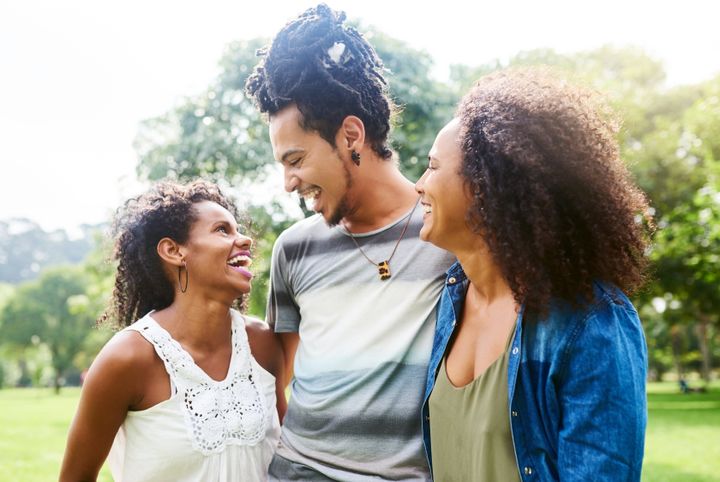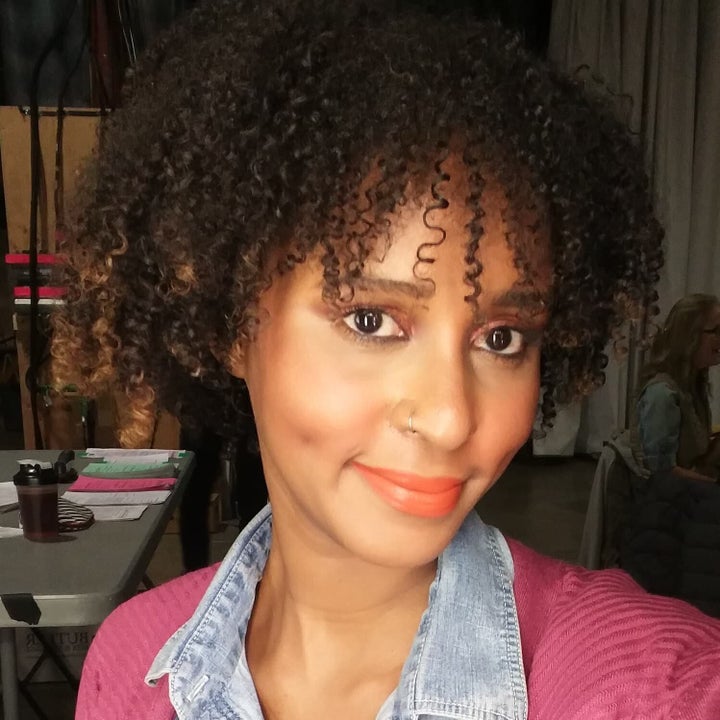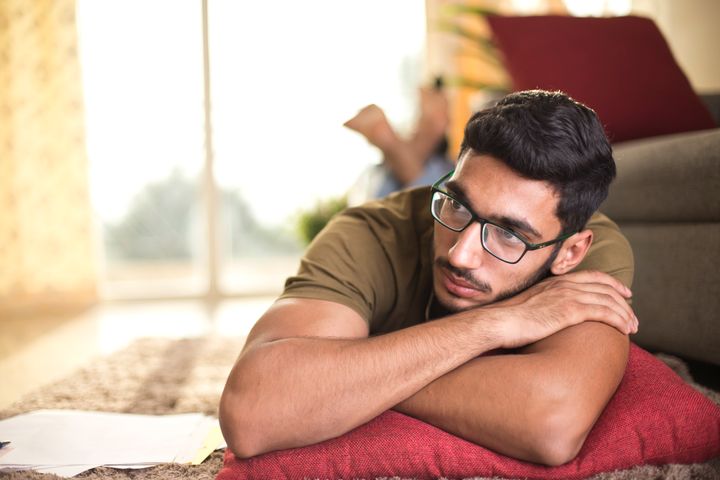
How can you feel love for more than one person? Before Gabby Cenona opened herself up to polyamory, this question was insurmountable. As the daughter of Filipino immigrants, her upbringing enforced the idea that people are only supposed to romance one person at a time.
But in hindsight, the answer was simple.
“You’d feel that tingly sensation for someone. Just multiply it by two. Or three. Or four. Or however many you want,” Cenona, a 27-year-old from Toronto who practiced non-hierarchical polyamory — an arrangement where she committed herself evenly to all her lovers— for years, told HuffPost Canada.
Polyamory, often shortened to “poly” or more recently “polyam,” refers to ethical relationships with more than one romantic and/or sexual partner. As the practice becomes more visible in Canada, so too are misconceptions rising to the surface. Among the most common: “Polyamory is for white people.”
In reality, Canadians of colour like Cenona are just as willing to form polyamorous relationships. Although white people tend to be the face of polyamory, a paper published in the German Journal of Psychology reports that people of colour are just as likely to engage in consensual non-monogamy.
Hear how children of immigrants navigate match-making, “dating while halal,” and sneaking around on “Born And Raised: Love,” available on Apple Podcasts or Google Podcasts. Story continues below.
People of colour (POC) who are ethically non-monogamous, meaning relationship styles of non-monogamy that aren’t cheating, explained to HuffPost Canada that while their love lives are active, they aren’t nearly as visible in media or represented in community spaces as their white counterparts. By virtue of who they are, their relationships are nuanced by racial inequality and cultural considerations; two factors that rarely get explored in mainstream conversations about polyamory.
Getting fetishized, ignored can lead to alienation
Indigenous, Black, and people of colour (IBPOC) who date multiple partners often face hurdles white polyamorous people don’t. Some feel demoralized by racial microaggressions and fetishization from love interests.
Jenny Yuen, a Toronto Sun editor and the author of Polyamorous: Living and Loving More, found that many of the polyamorous people of colour she talked to felt fetishized by polyamorous meetups and discussion groups; when concerns would be brought up, they’d be brushed aside.
“They feel like, for example if they’re Black, they’ll be asked to ‘taste the chocolate,’” Yuen said. When statements like those are called out, Yuen said, it can lead to a defensive retort like, “Why won’t you take that as a compliment?”
Racial fetishes aren’t just a problem in consensual non-monogamy, as they pose issues for many people of colour. But for a community that relies on finding like-minded individuals for a specific relationship style, the fear of fetishizing can become a huge deterrent to forming bonds. Psychology Today listed the fear of becoming someone’s fetish as a major reason why polyamorous community spaces like meetup groups are often white-dominated.

Kevin A. Patterson, author of the book Love’s Not Colorblind, notes that when Black people are present in white spaces, white attendees mistakenly believe that that it’s OK to objectify them. He recalls how at one event, a man told him about his wife and bragged about her “queen of spades tattoo;” the ink’s symbolism implied that she was into Black men, as “spade” can be used as a racial slur.
“We’re going to talk about this bullshit racist tattoo that you think is going to endear me to you, your wife, your situation,” Patterson told the man.
Patterson says that he and other polyamorous people of colour deal with this degree of insensitivity on such a regular basis that “for every one of these [incidents], there’s like five that I forgot.”
These experiences can lead people to alienate themselves from polyamorous communities, resulting in dwindling numbers. Millie Boella, a Black Canadian who was interviewed by Yuen, felt uneasy when she realized that only 11 out of 1,000 people in a Toronto polyamorous group she was added to were visibly people of colour, based on their Facebook avatars.
Patterson said that when he and his wife went to their first meetup for ethical non-monogamous locals, only five other people of colour attended. Four never returned.
“When you’re a person of colour, you have to decide how much white nonsense you’re willing to tolerate, how many microaggressions you’re willing to tolerate,” Patterson told HuffPost Canada.
People of colour have long histories with polyamory
For many cultures, polyamory isn’t anything new. The long history of consensual non-monogamy in many cultures predates today’s version of monogamy: having a heterosexual relationship with one person, leading to marriage, wasn’t the norm until 1,000 years ago, anthropologist Kit Opie told CNN. Relationship styles like “walking marriages,” open arrangements, and polyamory in Indigenous communities have been documented all around the world.
Despite this, many still see polyamory as a recent concept popularized by white North Americans.
“Anything that is progressive is deemed as ‘white people discovered it first,’” Boella said. The Vancouver resident, whose family comes from Kenya, says that there are non-monogamous relationships in her country; in her own family, some of her aunts married themselves. “My tribe has a lot of progressive love practices that I haven’t seen Western culture do … we always judge people of colour as conservative when there’s so much nuance to that.”

Statistics are still emerging about polyamorous populations and who they are. Current data suggests that only four per cent of Canadians are in polyamorous relationships and that most of them are white: a report by the Canadian Research Institute for Law and Family found that 90 per cent of respondents identified as white; the next biggest percentiles of visible minorities were Métis at almost two per cent, followed by Black and Chinese-Canadians at 0.8 per cent. A study on polyamorous Americans reported similar findings, with the majority of US respondents identifying as white.
But are these estimates completely accurate? Mic theorizes that people of colour might not elect to talk to a white researcher about their love lives as they are suspicious of the researcher’s intentions. And in spite of history, societal norms like monogamy might be something many communities of colour feel is necessary to uphold in order to be seen as respectable members of society.
“Anything that is progressive is deemed as ‘white people discovered it first."”
- Millie Boella
How POC families feel about polyamory
Aside from the unequal treatment they navigate in non-monogamous circles, polyamorous people of colour note that they may also face hardship when talking about love in their own communities.
While currently Cenona is coupled with a single person, she previously saw multiple partners at once.
Watch: how Gabby Cenona’s heart gravitated to her partners. Story continues below.
But for all the people Cenona adored, there was one unspoken rule: They could never meet her mom and dad.
“I would have loved to have my parents to meet them. ‘This is my partner, this is his wife.’ I wanted to invite my parents to be part of my family and be in the sun together, if that makes sense,” she said. “Being the daughter of two Filipino immigrants, there was no way for that.”
Cenona believes if her family had found out about her multiple partners, they would have seen it as an “aberration against everything they believed in, a failure on my end.” On the other hand, she knows that her white partners had an easier time coming out as polyamorous to their families and social circles.
“There’s probably less anxiety and a little more faith in their parents that they would try to understand,” she said.
The stigma Cenona worried about with her family is something Yuen has heard plenty of stories about.
“So there’s the outside bias in the polyamory community at large, which is predominantly white. And then you have the further challenge of [inside bias]. It’s such an arduous thing to endure,” Yuen told HuffPost Canada.

However, not every person of colour feels pressured to hide who they love; many have positive experiences disclosing to family. Yuen says her relationship with her parents has been “surprisingly positive.” Boella notes that she’s been supported by her loved ones.
So why do some attribute their cultural background as a barrier to being openly polyamorous?
Dani Kriatura is a 44-year-old genderfluid community worker from Toronto. As a Latinx person of mixed-race, they say it’s understandable when people of colour misunderstand polyamory as “cheating” or consider it deviant.
For many communities of colour the theoretical, academic framework of polyamory (which comes with an extensive vocabulary) is inaccessible. Kristura also believes that because they are marginalized, communities of colour may form strict attitudes toward behaviour that don’t fit Western norms as a survival tactic.
“The more marginalized a community is, the more it’s going to feel the need to police itself,” they say. “Whiteness is equated with privilege; privilege is freedom. When you get right down to it, white people can do anything and be looked at as individuals. They’re not going to be looked at as a reflection of their race. We are.”
Making polyamory better for people of colour
In the face of barriers to inclusion and cultural stigma, people of colour have taken it upon themselves to carve out spaces for solidarity and create educational resources.
Patterson was inspired to write Love’s Not Colorblind after hosting multiple workshops where, after sharing experiences of getting fetishized, attendees of colour would say, “That happened to me too.” As Patterson says, his book is one of the few resources about polyamory made by a Black man.
Boella told HuffPost Canada that she founded the Facebook group “Toronto Non-Monogamous BIPOC” after deciding the original group she was in needed a separate space for people of colour. The group has become popular in the city, spawning meetups that became workshops on requested topics. Their workshop on colonialism was a big hit among attendees. Kriatura, who is a member of the group, said the space has helped people share knowledge.
“This is where we can recognize and honour the worlds upon worlds upon worlds that exist within us. All of us have a wealth of different experiences,” they said.
Watch: responsible non-monogamists explain how their relationships work. Story continues below.
Other ways of improving polyamorous social circles include challenging the existing spaces to do better for their racialized attendees. Patterson said he is vocal when spaces make him uncomfortable as a Black person. This has led to sometimes being shunned for calling out organizers, but has also resulted in direct change: he and others were able to convince a Philadelphia community group to elect new organizers, which led to the reformed group instituting rules that ensured people of colour were in leadership roles and that the culture in the group would no longer tone police them.
Boella encourages polyamorous white people to be allies to their partners of colour. That can mean listening when a partner of colour calls them out or holding workshops that teach fellow white community members to stop unethical dating practices like fetishizing — or, on the flip side, avoiding relationships with certain ethnicities. She says she hasn’t seen workshops geared toward being supportive to partners of colour.
“I haven’t seen that; I feel like this is a massive blind spot,” she says.
When it comes to resolving racial conflict with white partners, a straightforward approach like Patterson’s approach could work: people who love you for who you really are will take the effort to treat all aspects of your identity with care.
“If my white partners can’t teach a class to other white people about racial dynamics, they’re not my partner,” Patterson says.
Also on HuffPost: